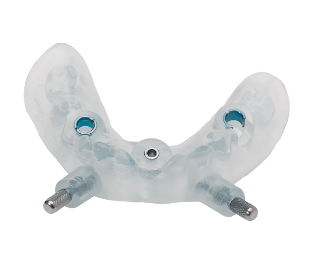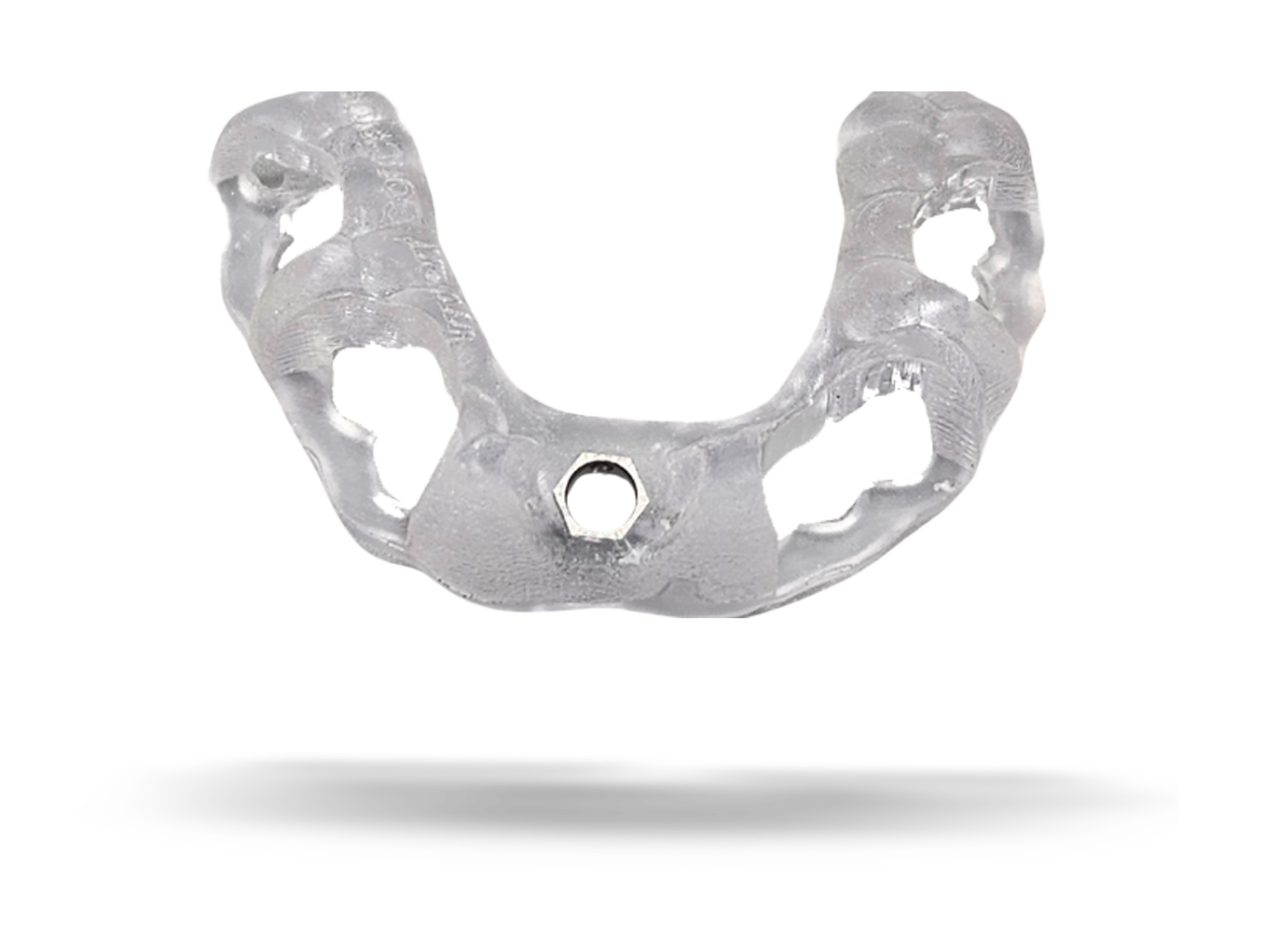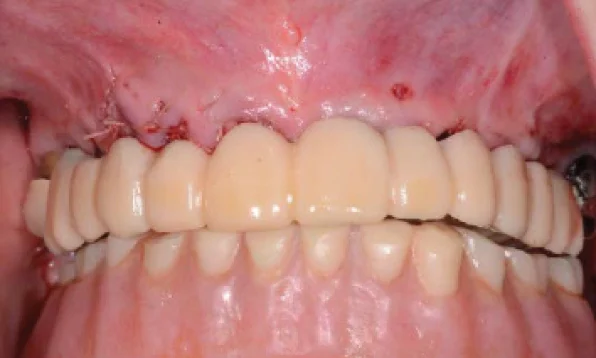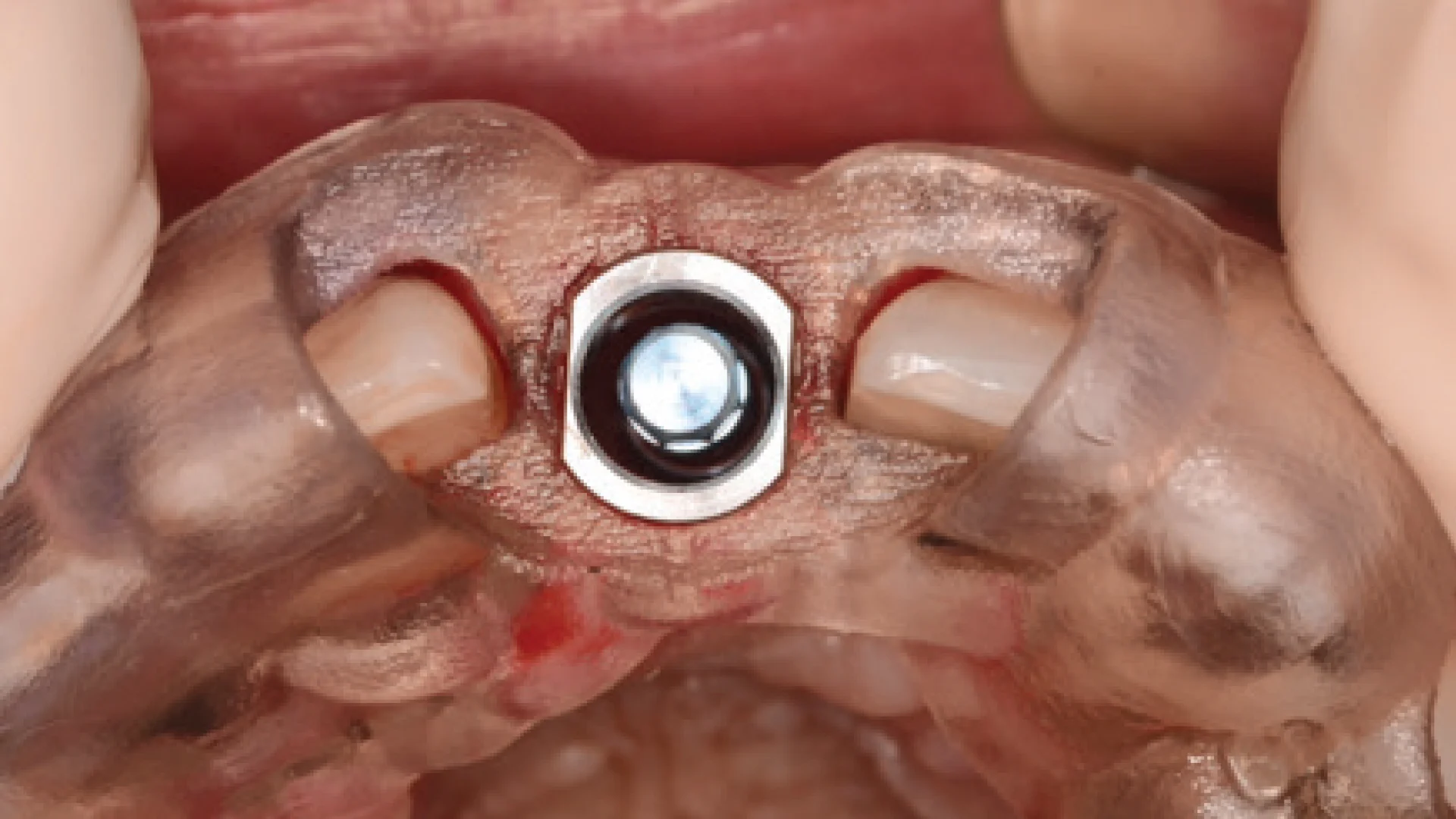For dental professionals managing fully edentulous patients, achieving precise and stable implant placement can be challenging. The Implant Concierge Tissue-Borne Surgical Guide offers a predictable solution, specifically designed for minimally invasive surgeries. While considered the least predictable guide option, a tissue-borne guide makes it an essential tool for experienced practitioners. When proper diagnostic data is acquired and specific guide design features are applied, it can become an essential appliance that provides predictable and precise implant outcomes. Here’s a comprehensive guide to understanding, using, and optimizing the Tissue-Borne Surgical Guide.
When to Use the Tissue-Borne Surgical Guide
This surgical guide is tailored to meet the demands of fully edentulous cases, offering a reliable framework for specific applications:
- Fully Edentulous Patients: Designed for cases where no natural teeth remain.
- Flapless Surgery Strategies: Ideal for minimally invasive approaches, though small incisions may sometimes be necessary.
- Fixed Cases: May be suitable if the required drill depth can be achieved without the need for bone alveoloplasty.
Key Statistics and Applications
- 15% of the guided cases at Implant Concierge utilize a tissue-borne guide, highlighting their popularity.
- They are particularly valuable for cases involving existing dentures or when transitioning to a fixed solution.
Challenges and Limitations
While the Tissue-Borne Surgical Guide offers unique advantages, there are limitations to consider:
- Unattached Gingiva: The guide’s stability relies heavily on proper tissue attachment. Unattached gingiva can reduce predictability.
- Diagnostic Data Issues: Incomplete or inaccurate diagnostic data can compromise the guide’s effectiveness.
Key Features of the Tissue-Borne Surgical Guide
Designed with functionality and precision in mind, this guide incorporates the following features:
- Durable and Stable Design: With a thickness of 3 mm, the guide provides durability and stability during surgical procedures.
- Full Arch and Palate Coverage: For maxillary cases, the guide engages the palate, providing comprehensive support and stability during surgery.
- Incorporation of Denture Cusps: When possible, designing the teeth cusps into the guide from the existing denture enhances the placement predictability.
- Anchor Pins: Fixate the guide through the tissue to provide stability, reducing the risk of movement.
Diagnostic Data Requirements
Accurate and comprehensive diagnostic data is critical for the success of the Tissue-Borne Surgical Guide. Not only to ensure a stable and intimate fit, but also to aid in a restorative-based treatment plan. To ensure optimal performance, follow these protocols:
Denture Design
- Always start with a hard-relined, well-fitting denture.
- Ensure that teeth’s position, shape, and size are ideal.
- The guide will be the exact size and fit of the denture.
Dual Scan Protocol (DSP)
- Ensures detailed visualization and predictability of soft and hard tissue.
- Provides accurate intaglio surface model and restorative data.
- Incorporate x-ray stickers as fiduciary markers to enhance scan alignment and accuracy.
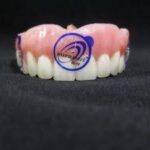
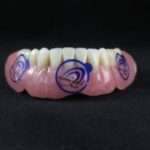
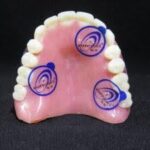
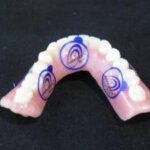
Capture in Occlusion
- Any case that includes a denture should always be captured in occlusion.
Deep Vestibule Visualization
- Detailed imaging of the deep vestibule ensures proper fit and alignment.
Soft Tissue Separation
- While not mandatory, separating the soft tissue increases the accuracy of the merging of the diagnostic data, provides additional clarity in the scans, and improves restorative planning.
Denture or Alternative Techniques
- If a well-fitting hard-relined denture is unavailable, consider alternative techniques to capture the necessary anatomy.
- Properly relined dentures help achieve a better fit and reduce potential errors in the guide’s design, fit and stability.
How to Use the Tissue-Borne Surgical Guide
Maximizing the guide’s potential requires careful preparation and adherence to surgical protocols.
Before Surgery
- Read All Protocols: Review the Surgical Protocol Sheet and special instructions provided with the guide
- Fit Check: Test the guide three days prior to surgery to ensure a stable and proper fit. Stability is crucial—there should be no rocking.
- If rocking occurs, inspect the intaglio surface for interference between the master sleeve and tissue.
- Some cases require minor incisions to allow the guide to fit securely.
During Surgery
- Positioning the Guide:
- If teeth cusps are present, have the patient bite down with slight blanching to ensure ideal positioning.
- For cases without teeth, maintain constant apical pressure on the guide to prevent movement.
- Anchor Pins:
- Drill one Anchor Pin (AP) osteotomy at a time and fully insert the AP pin before proceeding to the next.
- Ensure that apical pressure is provided until all anchor pins are delivered.
- Tissue Management:
- Use a tissue punch to remove soft tissue.
- Flapless approaches may occasionally require small incisions to release tissue tension.
- Drilling Technique:
- Fully insert the drill into the guide’s sleeve before activation.
- Use a vertical pumping motion to ensure copious irrigation and minimize drag on the sleeves.
- If a sleeve dislodges, reposition it within the guide and proceed without delay.
Immediate Restorative Options
To enhance patient satisfaction and reduce chair time, Implant Concierge offers various immediate restorative options for tissue-borne cases:
Patient’s Current Denture:
- Sleep implants and soft reline denture.
- Soft relining an existing denture provides a cost-effective and functional temporary restoration.
Denture Conversion for Fixed Solutions
- Convert the patient’s existing denture into a fixed prosthesis, streamlining the transition to a permanent solution.
- Smart Denture Conversion ready-dentures can also be provided with the surgical guide.
Monolithic Printed Surgical Denture
- Implant Concierge can provide a monolithic printed surgical denture tailored to the patient’s anatomy. This durable, aesthetic option serves as an excellent interim restoration.
Why Choose the Tissue-Borne Surgical Guide?
The Tissue-Borne Surgical Guide from Implant Concierge is an innovative tool designed to meet the unique challenges of fully edentulous cases. With careful planning, accurate diagnostic data, and adherence to surgical protocols, this guide can significantly enhance precision and predictability in implant procedures. From tissue-supported cases to immediate restorative options, it empowers practitioners to deliver exceptional patient outcomes.
To learn more about this surgical guide and other advanced solutions from Implant Concierge, visit our website.
